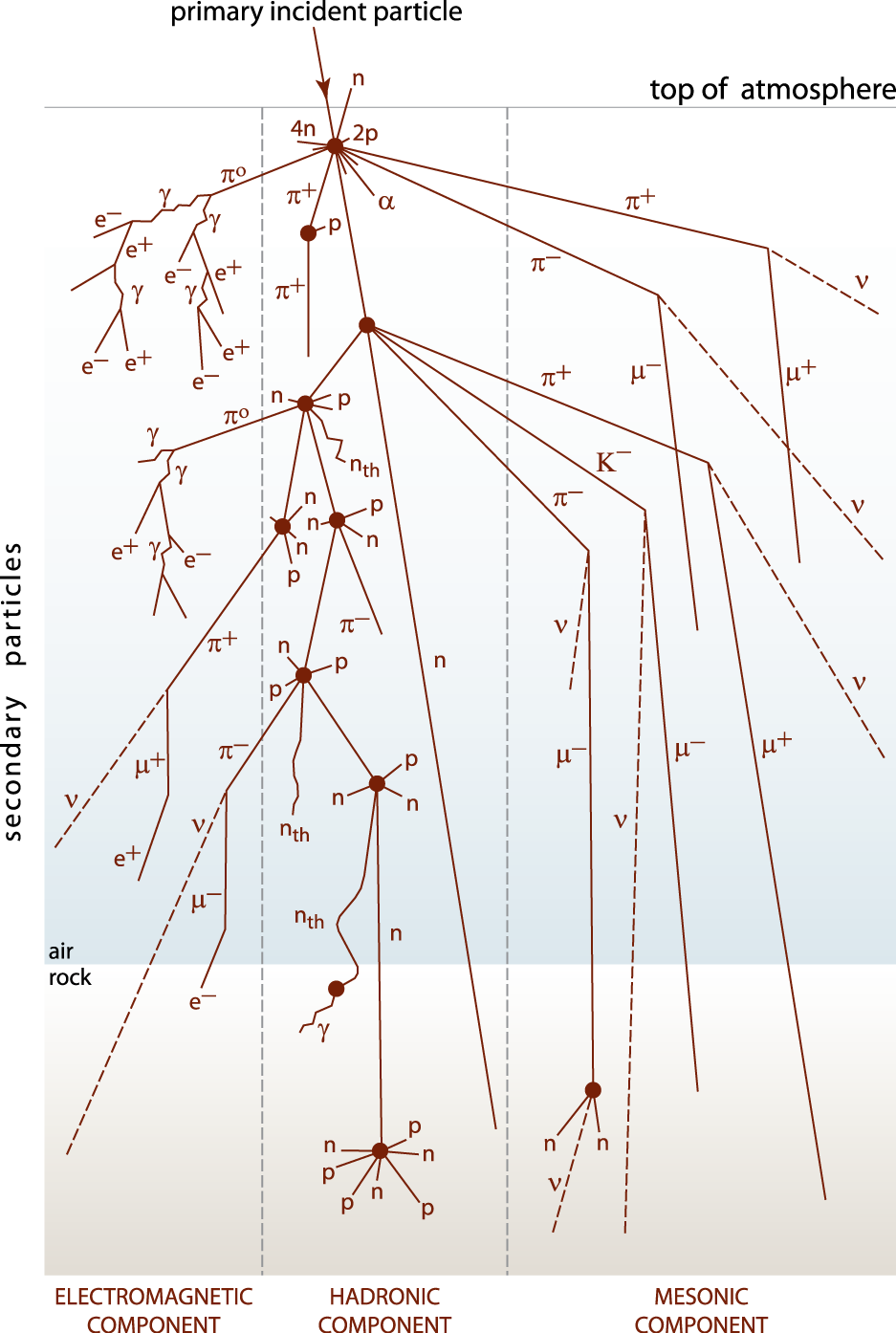 Welcome
Welcome
Welcome to our website
The resources presented in this website have been put together and are maintained jointly by the German Research Centre for Geosciences (GFZ) and the University of Cologne's Institute of Geology and Mineralogy.
 Introduction
Introduction
What are cosmogenic nuclides?
| Schematic representation of an atmospheric cascade showing the production of secondary cosmic particles in the Earth's atmosphere and crust (Figure modified from Gosse and Phillips 2001; doi:10.1016/S0277-3791(00)00171-2) | Cosmogenic nuclides are produced through interactions between cosmic rays and target nuclei in Earth's atmosphere and surface materials. Those which are produced in Earth's atmosphere are termed ‘meteoric' while the nuclides produced in surface material are known as in-situ cosmogenic nuclides. The past two decades have seen a proliferation of applications for cosmogenic nuclides. This is primarily due to a revolution in accelerator mass spectrometry, AMS, measurement technique which has allowed the measurement of very small amounts of nuclides. This website is a brief introduction to the theory and application of in-situ produced cosmogenic nuclide methods. Galactic cosmic radiation is composed of high energy particles (image to the left), mostly protons with energies ranging from 0.1-1020 GeV. The source of the particles is thought to be supernova explosions within our galaxy. This primary cosmic ray flux enters Earth's atmosphere inversely proportional to the magnetic fields of Earth and Sun. Upon entering the atmosphere, the particles collide with molecules, initiating spallation reactions and producing a secondary particle flux consisting of neutrons, protons, electrons, pions, muons, neutrinos and smaller nuclei (meteoric cosmogenic nuclides). This flux of secondary cosmic rays peaks in the lower stratosphere, then decreases with increasing atmospheric depth with an e-folding length of ~0.8 km. The majority of these secondary particles will interact with atmospheric nuclei producing meteoric cosmogenic nuclides. A small portion, however, reach the ground. It is those particles that arrive at the surface with sufficient energy that are responsible for producing cosmogenic nuclides. Of the cosmogenic nuclides that exist, only a few are commonly used in the Earth Sciences; 3He, 10Be, 14C, 21Ne, 26Al and 36Cl. As in the atmosphere, cosmic rays are attenuated with depth in surface material, albeit with a much shorter e-folding length of ~ 60 cm. This attenuation results in a semi-exponential distribution of cosmogenic nuclides which are restricted to the upper few meters of Earth's surface. The absolute concentration of a cosmogenic nuclide in surface materials is controlled by the rates of in-situ production, nuclide decay, and removal by surface erosion. |
The in-situ production rates different for each nuclide and depend on the composition of the target mineral, the geomagnetic latitude and longitude, altitude, and geomagnetic field strength. Calibrating sites of known age throughout the world have been used to verify and refine the production rates and production rate ratios of the commonly used cosmogenic nuclides.
